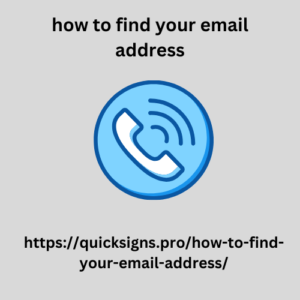Understanding your ideal customer profile (ICP) is fundamental for any successful business. An ICP is a detailed description of your perfect customer, encompassing demographics, behaviors, needs, and pain points. By creating a clear ICP, you can tailor your marketing efforts, product development, and sales strategies to resonate with the audience most likely to benefit from your offerings. This article equips you with a comprehensive guide to ideal customer profile templates, outlining key elements, benefits of using them, and essential tips for crafting an effective ICP.
Why Use an Ideal Customer Profile Template?
Developing an ICP offers a multitude of advantages for your business:
-
Targeted Marketing: An ICP helps you focus your marketing efforts on the right audience, maximizing return on investment (ROI).
-
Product Development: Understanding how to find your email address customer needs allows you to refine your product or service to better address their challenges.
-
Improved Sales Strategies: By knowing your ideal customer’s buying behavior, your sales team can tailor their approach for higher conversion rates.
-
Content Creation: An ICP helps you create targeted content that resonates with your ideal customer and positions you as a thought leader in their industry.
-
Resource Allocation: By prioritizing resources toward attracting and serving your ideal customer, you can optimize your overall business strategy.
Key Elements of an Ideal Customer Profile Template
A well-defined ICP template should encompass various aspects of your ideal customer:
-
Demographics: This includes basic information like age, gender, location (country, state, city), income level, education, and job title.
-
Firmographics (B2B): For businesses targeting other businesses (B2B), consider factors like company size, industry, revenue range, and decision-making hierarchy.
-
Psychographics: Explore your ideal customer’s values, interests, personality traits, and lifestyle preferences.
-
Behavioral Traits: Understand your ideal customer’s online behavior, purchasing habits, media consumption Mastering Cold Call Lead Generation a comprehensive guide patterns, and pain points they seek to address.
-
Needs and Challenges: Identify the specific problems your ideal customer faces and how your product or service can provide solutions.
Additional Considerations: Include sections for future considerations as your business evolves, such as:
-
Growth Potential: Consider the potential for upselling, cross-selling, or expanding customer lifetime value.
-
Brand Affinity: Identify if your ideal customer aligns with your brand values and overall brand image.
Crafting Your Ideal Customer Profile Template: Step-by-Step Guide
Here’s a step-by-step approach to creating your ideal customer profile template:
-
Gather Customer Data: Utilize existing customer data from sales records, website analytics, customer surveys, and market research reports.
-
Segment Your Audience: If your business caters to multiple customer segments, create separate ICPs for each segment.
-
Conduct Customer Interviews: Engage with existing customers or potential customers within your target market to gain deeper insights into their needs and motivations.
-
Develop Buyer Personas: Create fictional representations of your ideal customer based on the data you’ve gathered. Give them names, backstories, and specific characteristics.
-
Validate and Refine: Continuously test and refine your ICP based on market feedback, sales results, and customer interactions.
Template Example:
Ideal Customer Profile
Customer Name: (Insert Name – Consider using a buyer persona name)
Demographics:
- Age: (Age Range)
- Gender: (Male/Female/Non-Binary)
- Location: (Country, State, City)
- Income Level: (Income Range)
- Education: (Highest Level of Education)
- Job Title: (Job Title)
Firmographics (B2B Only):
- Industry: (Industry)
- Company Size: (Number of Employees)
- Revenue Range: (Revenue Range)
Psychographics:
- Values: (List of Values)
- Interests: (List of Interests)
- Personality Traits: (List of Traits)
- Lifestyle Preferences: (Description of Lifestyle)
Behavioral Traits:
- Online Behavior: (Website Usage, Social Media Habits)
- Purchasing Habits: (Frequency of Purchase, Preferred Channels)
- Media Consumption: (Preferred Media Sources)
Needs and Challenges:
- (List of Specific Needs and Challenges)
Growth Potential:
- Upselling/Cross-Selling Opportunities: (Describe Opportunities)
Brand Affinity:
- Alignment with Brand Values: (Explain Alignment)
Remember: This is a sample template, and you can customize it to fit your specific business needs.
